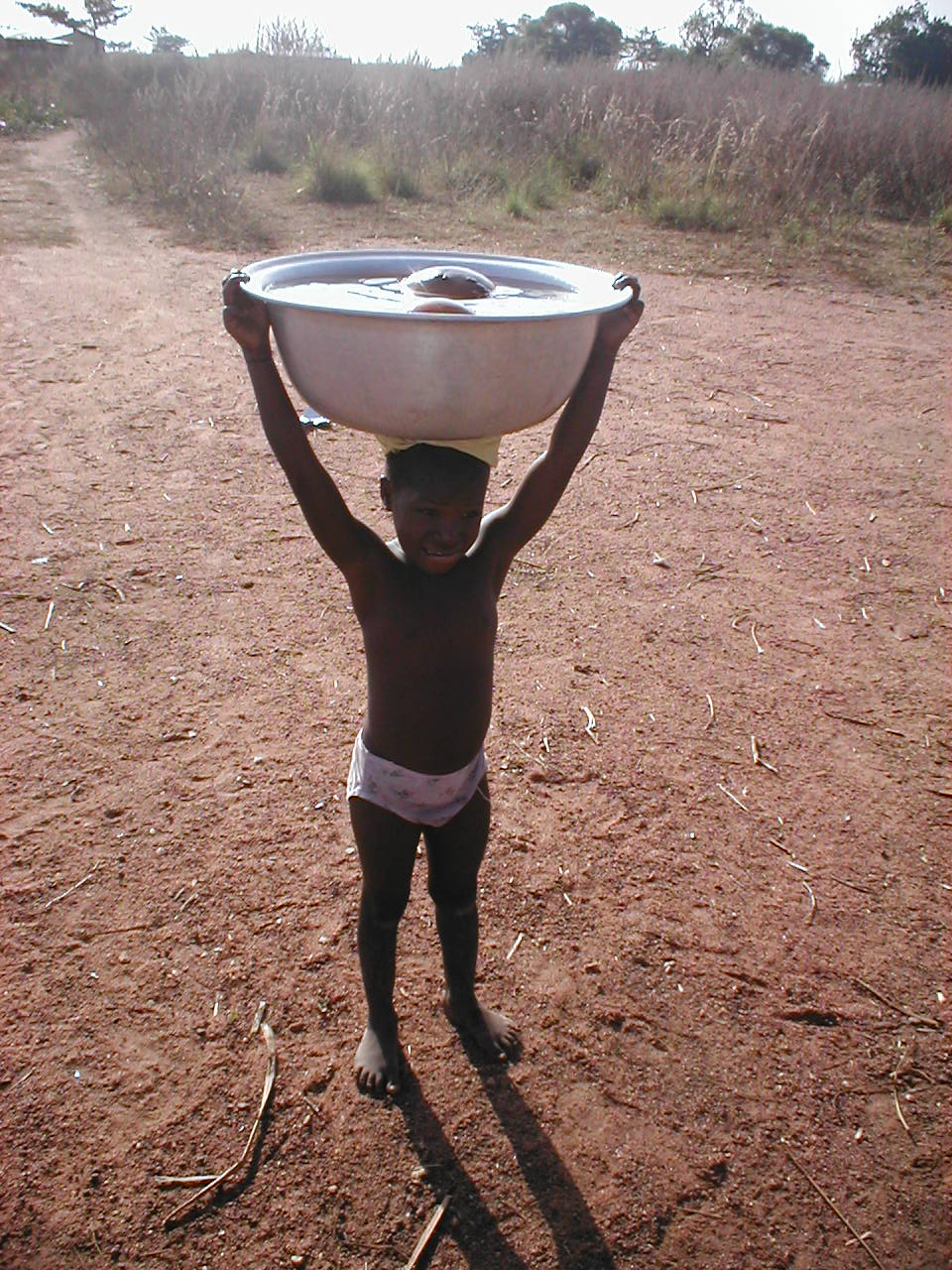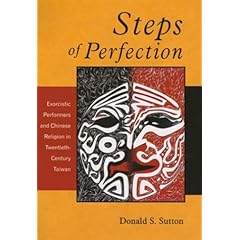 Dave Randolph
Dave Randolph over at
iron-body offered a spirited response to my somewhat comic post entitled, "
The Two Finger Rule." He offered several challenges to my anti-strength position so I thought it would be a good idea to explore them.
Do you see all the obese, people out there? People who can barely carry their groceries into the house. Frail old ladies & men who can’t get out of a chair by themselves or have to use an extension thing on the toilet so they don’t have to squat down so far.
Yes, I do see them. Obese people eat too much. People get old and die. I'm not sure, because
I haven't done it yet, but I think getting old and dying takes a lot of practice. If you try to do it without practicing, you can expect some extra complications. Internal Martial arts like Taijquan can be understood as
practicing for death.Correct strength training does not impede the flow of fluids or qi.
Are you saying that all the old drawings of monks carry water up and down steps, swinging stone lock etc were wrong in trying to build functional strength??
Are you confusing true strength training with body building? Yes building bodies is wrong. It teaches muscle isolation and creates huge muscles that are not necessarily strong and that will creates circulation issues. But proper strength training, and I’m speaking of barbells & dumbbells, but things like kettlebells, clubbells, sandbags etc, that teach full body integration and coordination, causes so many positive responses the body in terms or weight control, mobility, flexibility, coordination not to mention the positive effects on hormonal balances, sleep, digestion, among other things
not necessarily strong and that will creates circulation issues. But proper strength training, and I’m speaking of barbells & dumbbells, but things like kettlebells, clubbells, sandbags etc, that teach full body integration and coordination, causes so many positive responses the body in terms or weight control, mobility, flexibility, coordination not to mention the positive effects on hormonal balances, sleep, digestion, among other things
If the definition of
"correct strength training" is that it
does not impede flow of fluids or qi, than I would be inclined to agree. However; the people I've watched training with these AKC Kettle Bells (pictured to the right) do indeed

restrict qi circulation, and they compress qi as well.
But let's agree to drop the word qi, because it has too many possible meanings for such a concrete disagreement.
What I mean by qi in this case is a quality of animation that is characteristic of active children and predatory animals.
 Monks in Asia carry water on their shoulders
Monks in Asia carry water on their shoulders, people in Africa and South America carry it on their heads. The skill of carrying water is to continuously transfer all of the weight to the ground and not take any of it in your muscles. Since water tends to slosh around, this requires constant movement and is perhaps one of the reasons we see such great hip articulation in dances like the
Samba and the Rumba.
I'll concede that if someone is really good at water carrying and they get help putting the water on their shoulders or their head, they can carry a heavy load and avoid loosing sensitivity.
...Part of my strength training includes lots of mobility work for joints and muscles as well as qi gong.

I think the
Scott Sonnon, Iron-Body, movement to
loosen your joints and use awkward weights to stimulate your body to be more efficient is wonderful!
Now just drop the strength part!I love business, and I love this new health kick. But if you are looking for high level internal martial arts, strength will inhibit your development. My point is not to convince the world I'm right, I don't think sensitivity is for everyone. Perhaps I'm a
weakness elitist in that way. Then again, remind what we need strength for?
By the way can you pick up a 75 lb child with two fingers from each hand? No? then how are you going to pick one up & carry he/she if they are injured & can’t walk? Call for someone to help you pick them up?
I would like the world to know that I have two really s

trong fingers, and I'm undefeated in thumb wrestling. Also, I'm not saying
only use two fingers, I'm saying test whatever you are about to lift with two fingers. After the test feel free to add the other fingers, a hip, a chin, or even a whole arm. (And we've all heard the story about the lady who flipped over a car because her baby was underneath it. If you're healthy and
you really need the strength, it'll be there.)
As for picking up kids, two fingers in the armpits usually works, but in my experience they are not shy about biting, better to get help.
Since an injured kid is one less kid I have to teach, I should leave it at that but... I noticed the Iron-Body website does trainings for firefighters who obviously a

re in the business of rescuing people and their kids. This is great stuff. I admire the business model. But it does raise the question, do firefighters really need extra strength?
You know those ninja shoes? Well, they aren't actually ninja shoes, they are called
jika tabi. All construction workers wear
jika tabi in Japan. That's right,
Japanese construction workers think of themselves as crafts people, not laborers. They don't drop things on their feet, so they don't need steel-toed boots. Sometimes conventional thinking is a limitation.
When I was born, all the fire fighters in San Francisco were straight, white, over 6 feet tall, male, and at least 185lbs.
We had a Whites Only Union until 1990! San Francisco currently has twice as many fire fighters, engines, and firehouses as we need. When

ever a city official with balls comes along, the Unions go to the sentimental-fireman-gushing-voters and have that official castrated.
If we didn't have to pay for all that fire fighter corruption we could afford to design and build all new lightweight efficient equipment and we could even have
midget fire fighters. Strength is an issue here only because it protects a class of aging, compassionate and heroic men--that should have been let go a long time ago.


 You know that feeling you get when you spin around really fast and then stop? In the cartoons this feeling is usually illustrated with a swirl and some stars around the head. But actually the whole body has this spinning feeling. You can feel it in your knees and elbows too.
You know that feeling you get when you spin around really fast and then stop? In the cartoons this feeling is usually illustrated with a swirl and some stars around the head. But actually the whole body has this spinning feeling. You can feel it in your knees and elbows too. Dave over at
Dave over at  It's Winter in my part of the world. Time for slow cooking. Since the fire-pig year is coming to a close I thought I'd do something with pork.
It's Winter in my part of the world. Time for slow cooking. Since the fire-pig year is coming to a close I thought I'd do something with pork. Dave Randolph
Dave Randolph not necessarily strong and that will creates circulation issues. But proper strength training, and I’m speaking of barbells & dumbbells, but things like kettlebells, clubbells, sandbags etc, that teach full body integration and coordination, causes so many positive responses the body in terms or weight control, mobility, flexibility, coordination not to mention the positive effects on hormonal balances, sleep, digestion, among other things
not necessarily strong and that will creates circulation issues. But proper strength training, and I’m speaking of barbells & dumbbells, but things like kettlebells, clubbells, sandbags etc, that teach full body integration and coordination, causes so many positive responses the body in terms or weight control, mobility, flexibility, coordination not to mention the positive effects on hormonal balances, sleep, digestion, among other things restrict qi circulation, and they compress qi as well.
restrict qi circulation, and they compress qi as well. Monks in Asia carry water on their shoulders, people in Africa and South America carry it on their heads. The skill of carrying water is to continuously transfer all of the weight to the ground and not take any of it in your muscles. Since water tends to slosh around, this requires constant movement and is perhaps one of the reasons we see such great hip articulation in dances like the Samba and the Rumba.
Monks in Asia carry water on their shoulders, people in Africa and South America carry it on their heads. The skill of carrying water is to continuously transfer all of the weight to the ground and not take any of it in your muscles. Since water tends to slosh around, this requires constant movement and is perhaps one of the reasons we see such great hip articulation in dances like the Samba and the Rumba. I think the
I think the  trong fingers, and I'm undefeated in thumb wrestling. Also, I'm not saying only use two fingers, I'm saying test whatever you are about to lift with two fingers. After the test feel free to add the other fingers, a hip, a chin, or even a whole arm. (And we've all heard the story about the lady who flipped over a car because her baby was underneath it. If you're healthy and you really need the strength, it'll be there.)
trong fingers, and I'm undefeated in thumb wrestling. Also, I'm not saying only use two fingers, I'm saying test whatever you are about to lift with two fingers. After the test feel free to add the other fingers, a hip, a chin, or even a whole arm. (And we've all heard the story about the lady who flipped over a car because her baby was underneath it. If you're healthy and you really need the strength, it'll be there.) re in the business of rescuing people and their kids. This is great stuff. I admire the business model. But it does raise the question, do firefighters really need extra strength?
re in the business of rescuing people and their kids. This is great stuff. I admire the business model. But it does raise the question, do firefighters really need extra strength? ever a city official with balls comes along, the Unions go to the sentimental-fireman-gushing-voters and have that official castrated.
ever a city official with balls comes along, the Unions go to the sentimental-fireman-gushing-voters and have that official castrated.
 Processions for popular Heavenly gods mimicked the parading that magistrates and other representatives of Earthly government employed. In one account, Sutton describes how a magistrate and his entourage are forced to wait for some offensive amount of time while a god (often a youth with a painted face) passes by in a sedan chair dressed in magistrate like robes with a simular but perhaps larger entourage.
Processions for popular Heavenly gods mimicked the parading that magistrates and other representatives of Earthly government employed. In one account, Sutton describes how a magistrate and his entourage are forced to wait for some offensive amount of time while a god (often a youth with a painted face) passes by in a sedan chair dressed in magistrate like robes with a simular but perhaps larger entourage. Thus confessions were associated with both healing and merit. The threat of torture in the near future or by
Thus confessions were associated with both healing and merit. The threat of torture in the near future or by  Aggression, of course, is a constant "cause" of qi wasting. From a Daoist point of view, if you lose your temper, you probably caused yourself a very minor internal injury, but you also caused some kind of reaction in the world around you. That reaction, like a ripple in a pond might dissipate gently, but it also might lead to a tidal wave somewhere down the line. And since we have no way of really knowing, losing your temper is seen as inappropriate. I think it is important to note, that from a Daoist point of view, well timed aggression may be worth the risk.
Aggression, of course, is a constant "cause" of qi wasting. From a Daoist point of view, if you lose your temper, you probably caused yourself a very minor internal injury, but you also caused some kind of reaction in the world around you. That reaction, like a ripple in a pond might dissipate gently, but it also might lead to a tidal wave somewhere down the line. And since we have no way of really knowing, losing your temper is seen as inappropriate. I think it is important to note, that from a Daoist point of view, well timed aggression may be worth the risk. This is a really
This is a really  I've got lots of material lined up to write about but much of it is in the category of "mind blowing" revelation and reinterpretation, so I want to really take the time to do it right. That means a lot of metaphorical heavy lifting, perhaps long posts broken up into sections. So I'm offering something a little lighter for tonight.
I've got lots of material lined up to write about but much of it is in the category of "mind blowing" revelation and reinterpretation, so I want to really take the time to do it right. That means a lot of metaphorical heavy lifting, perhaps long posts broken up into sections. So I'm offering something a little lighter for tonight. Building up strength cuts off fluid circulation, and reduces sensitivity. The more strength you build, the less ability you have to continuously engage every millimeter of your body. Our bodies are dynamic enough that we can be more like tigers and octopuses, or we can be more like oxen and yaks. Which type of animal you are like depends a little on personal preference and a lot on fate. If you have the fate to practice internal martial arts than you can cultivate weakness like a tiger or an octopus.
Building up strength cuts off fluid circulation, and reduces sensitivity. The more strength you build, the less ability you have to continuously engage every millimeter of your body. Our bodies are dynamic enough that we can be more like tigers and octopuses, or we can be more like oxen and yaks. Which type of animal you are like depends a little on personal preference and a lot on fate. If you have the fate to practice internal martial arts than you can cultivate weakness like a tiger or an octopus. One of the most common ways to injure ones back is to reach for a heavy pot on the back of the stove. If you follow the Two Finger Rule you'll be sure to pull that pot of black-eyed peas and bacon to the front burner before trying to pick it up.
One of the most common ways to injure ones back is to reach for a heavy pot on the back of the stove. If you follow the Two Finger Rule you'll be sure to pull that pot of black-eyed peas and bacon to the front burner before trying to pick it up.